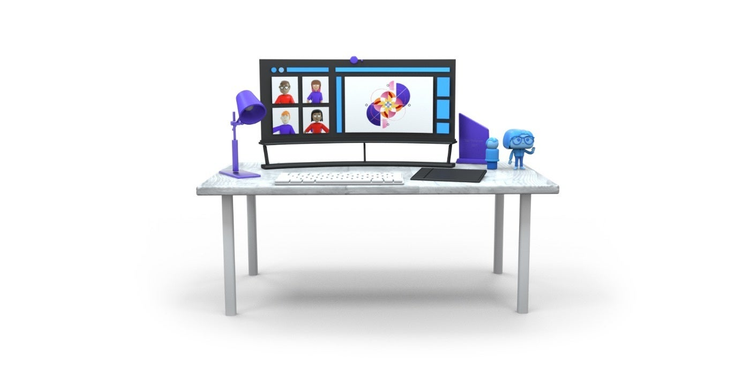State of Work report: Employees more invested in work than ever - expect the same in return
New study from Workfront and Adobe offers insights for employers looking to drive employee engagement in COVID age of digital transformation.

For the previous six years, the annual State of Work report gave leaders compelling insights into how the digital workforce views and values work. But the 2021 report came together a little bit differently. Thanks to some fortunate timing, our research team conducted a survey in the first quarter (Q1) of 2020, just prior to the global COVID-19 pandemic — and the near-overnight shift of employees working in an office to most working from home. Researchers fielded the same questions again in the fourth quarter (Q4) and compared the two data sets. These findings, mined from the surveys of 1,000 remote employees at large companies in the U.S., reveal profound opportunity — and risk — for employers looking to lead in this age of digital transformation.
The State of Work research surfaced the four themes below. For more details, be sure to read the full U.S. report, and for an international perspective, check out the 2021 U.K. and Germany State of Work reports.
Discovery #1: Digital workers are resilient
Amid the personal and professional challenges of the pandemic, workers’ confidence saw an uptick in key areas of work ranging from managing time, to learning new skills, to communicating ideas. Especially interesting is that digital workers gained capacity in two of the most difficult aspects of work: collaborating with colleagues across geographies, which rose by 4 points, and dealing with work-related conflict and hard conversations, which rose by 5 points.
Deprived of the energy and inspiration of in-person brainstorming and collaboration, remote workers turned to technology to support a variety of creative activities. The report shows a 9-point rise in reliance on technology to support creativity and innovation, and an 8-point rise in workers relying on technology to develop new ideas.
Robyn Tombacher, global head of workforce management for the marketing firm WPP, has a positive outlook on this shift. Being forced to accelerate the use of digital collaboration tools has been a “gift” for her company. “Our creativity isn’t limited because we don’t sit next to each other,” Tombacher says.
Discovery #2: Digital workers are even more engaged
Despite — or perhaps because of — this past year’s events, employee engagement is on the rise. The number of employees who reported feeling invested in their jobs grew from 79 percent to 81 percent. During this same period, the number who said doing their best work was more important than pay jumped by nearly 10 percentage points.
While undoubtedly good news for employers, these findings come with a word of warning: Paired with this desire to make a difference at work is a need that employees have to feel valued. The number of those feeling unappreciated rose by 8 points, and in both the Q1 and Q4 studies, feeling unappreciated was the top barrier to employees feeling invested in their work.
Discovery #3: Digital workers have new expectations
While remote employees are more engaged and invested in their jobs, they also have higher standards. One big reason: Digital employees know what a good customer experience feels like, and they bring those expectations to work. So, when technology makes their jobs harder or limits their success, they are willing to walk away. In fact, 49 percent of respondents said they will quit a job if the technology is out of date or hard to use.
These numbers represent more than a desire to have access to the latest and greatest, says Elizabeth Volini, the executive director of JLL Technologies. By failing to invest in the right tools, companies are sending the signal that they “aren’t very concerned with the quality of work or the people doing the work,” she says.
Discovery #4: Generations are being impacted differently
Remote workers are not all the same, and they are responding differently to the changes and challenges that have emerged over the past year — and into the future. This is particularly true when comparing millennials, those between the ages of 25 and 40, and Gen Xers, who range in age from 41 to 56. According to the data, Gen Xers showed major gains in confidence around communication, including conflict resolution and their ability to build and reinforce trust in a new environment. Millennials, meanwhile, appear to be adapting at a slower pace, particularly with regard to trust. On that issue, millennials reported a 3-point drop compared to the Gen Xers’ 4-point rise.
These trends suggest employers need to address both the technological needs and the “life-situation barriers” impacting individuals and teams.
“We tend to assume that because younger workers grew up as ‘digital natives,’ they’re very comfortable with a technology-enabled workplace and don’t need the extra support,” says Laura Butler, SVP of people & culture at Workfront. “But younger workers haven’t had the opportunity to build collective resilience through a national catastrophe, are still growing their professional networks, and haven’t logged as many years absorbing all the nuances of corporate culture.” Add to this the fact that many have young children at home, and it is easy to see why millennials face an uphill climb when it comes to these topics.
Taking the lead
The future of work is distributed, flexible, and autonomous. Companies must prioritize technologies that make it easy for employees to collaborate, stay aligned across time zones and geographies, and work in the places — and with the tools — they love. Doing so will boost productivity, direct business outcomes, and help companies attract and keep the best talent, regardless of where or how they work.
Read the entire study for more about supporting your employees in today’s fast-changing workplace.